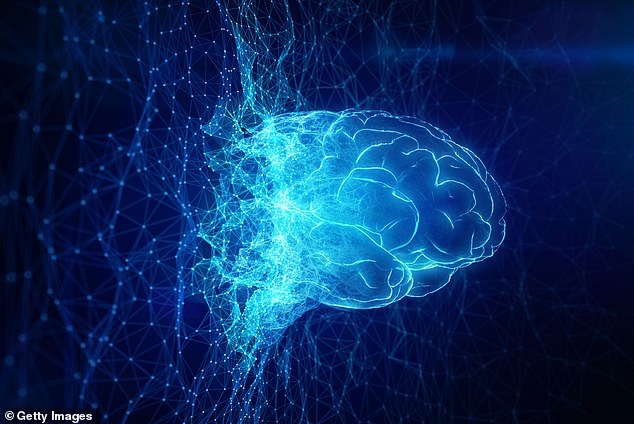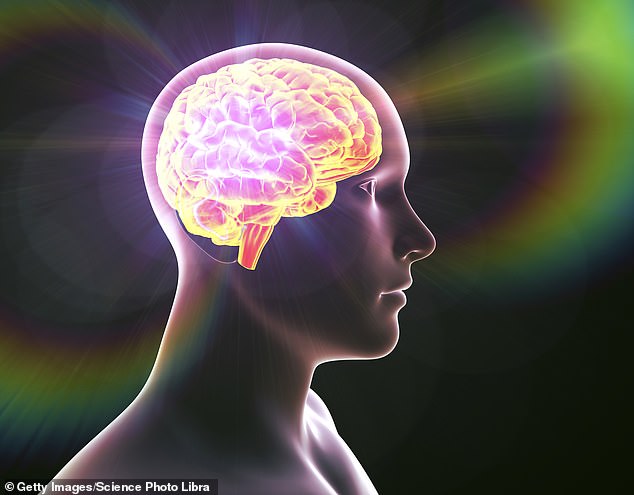A puzzling new theory to explain human consciousness has suggested it stems from hidden dimensions and is not just brain activity.
A physicist has claimed that we connect to these invisible planes of the universe when we make art, practice science, reflect on philosophy or dream, and this could explain the phenomenon that has evaded scientific understanding for centuries.
Michael Pravica, a physics professor at the University of Nevada, Las Vegas, has based his crazy idea on hyperdimensionality, the idea that the universe is made up of more dimensions than the four we perceive: height, length, width, and time.
But his theory is highly controversial and one scientist said the cornerstone of Pravica’s theory “borders on science fiction”.
Physicist Michael Pravica believes that human consciousness transcends the physical world and moves between hidden dimensions.
“The mere fact that we can conceive of dimensions higher than four within our minds, within our mathematics, is a gift… it’s something that transcends biology,” Pravica said. Popular mechanics.
Scientists have been trying to explain human consciousness and its origins for hundreds of years, and theories run the gamut.
One of the most important theories suggests that consciousness is related to the amount of information that is integrated between different parts of the brain. The more information is connected and integrated, the more conscious a being is considered to be.
Another theory holds that conscious mental states are driven by top-down signaling in the brain. Top-down signaling refers to the process by which higher-level brain regions send information, expectations, or context to lower-level brain regions.
But Pravica’s theory ventures beyond the realm of neuroscience and enters theoretical physics.
He suggested that in moments of heightened awareness, such as when we enter a dream state or use our brains for deeply creative or intellectual tasks, our consciousness might transcend our physical dimension and enter a higher plane.
At this time, our consciousness is synchronized with hidden dimensions and receives a torrent of inspiration, Pravica said.
To better understand the controversial theory, let’s consider the following scenario.
Imagine that you are a two-dimensional being living in a two-dimensional world, like a character in a comic book. Now, imagine that a sphere is passing through your plane of vision.
The sphere would appear to be a point that grows larger as you get closer and then gradually shrinks until it disappears from view. There would be no way to tell that it was actually a three-dimensional shape.
Pravica sees us as a version of these 2D characters. Although we exist in a four-dimensional world, we can only perceive matter and energy that is from those four dimensions, just as beings in a 2D world cannot perceive a 3D object.
Thus, the limitations of our world prevent us from detecting higher dimensions that, in theory, could exist around us.
This is the basis of hyperdimensionality: the idea that the universe is made up of many dimensions, some of which are hidden because they are beyond the reach of our physical realm.
Hyperdimensionality relates to string theory, which states that reality is made up of infinitely small vibrating strings that are smaller than atoms, electrons, or quarks.
As the strings vibrate, twist and bend, they produce effects in multiple invisible dimensions that give rise to all the particles and forces we can observe, from particle physics to gravity.
“String theory is essentially a theory of hyperdimensionality,” Pravica said. “It studies how the universe is built at the subquantum scale.”

Pravica believes that our brains can access higher dimensions when we are in a dream state or performing deeply creative or intellectual tasks.
Although we can observe the effects these vibrating strings have on the physics of our dimension, we cannot observe the hidden dimensions in which they vibrate.
That is, we can’t. physically observe them
But our consciousness may be able to access them, Pravica says.
Hyperdimensionality and string theory are widely accepted by physicists, but Pravica’s idea of their relationship to consciousness is more controversial, especially because it blurs the lines between science and spirituality.
As an Orthodox Christian with a PhD from Harvard, Pravica has found hyperdimensionality to be a way to bridge his scientific background with his religious beliefs.
For example, he believes that Jesus may be a hyperdimensional being.
“According to the Bible, Jesus ascended to heaven 40 days after being on Earth. How do you ascend to heaven if you are a four-dimensional creature?” Pravica asked.
But being hyperdimensional could theoretically have allowed Jesus to move between our world and heaven, which may be a higher- or infinite-dimensional world, he said.
Pravica’s theory is based on the “God of the gaps” perspective, where gaps in scientific knowledge are explained by divine intervention, said Stephen Holler, an associate professor of physics at Fordham University.
He believes that this type of thinking is insufficient and hinders the scientific research necessary to truly understand and explain ineffable phenomena such as human consciousness.
“It’s a poor explanatory mechanism that arguably stifles the inquisitive nature necessary for good science and teaches that it’s not okay to say ‘I don’t know,'” Holler told Popular Mechanics.
He points out that our ability to mathematically manipulate higher dimensions is not proof that they actually exist or that our consciousness can interact with them.
Furthermore, exploring these higher dimensions is impossible due to the limitations of our current technological capabilities.
Not even the world’s most powerful particle accelerator – CERN’s Large Hadron Collider (LHC) – can provide real proof that these dimensions exist.
The LHC collides particles at incredibly high speeds: up to the speed of light.
This allows physicists to study the fundamental components of matter and energy and access infinitesimally small dimensions, even smaller than a single proton.
But even the LHC is unable to reveal the high-dimensional strings predicted by quantum physics. To achieve that level of detail, physicists would need a much more powerful collider.
Without that concrete evidence, Holler says hyperdimensionality “borders on science fiction.”
But Pravica is optimistic that such technology could exist within her children’s lifetime.
Until then, he will continue to support hyperdimensionality and his theory of how it relates to our consciousness.
“I don’t see any point in anything else,” he said. “Why study? Why live?”

